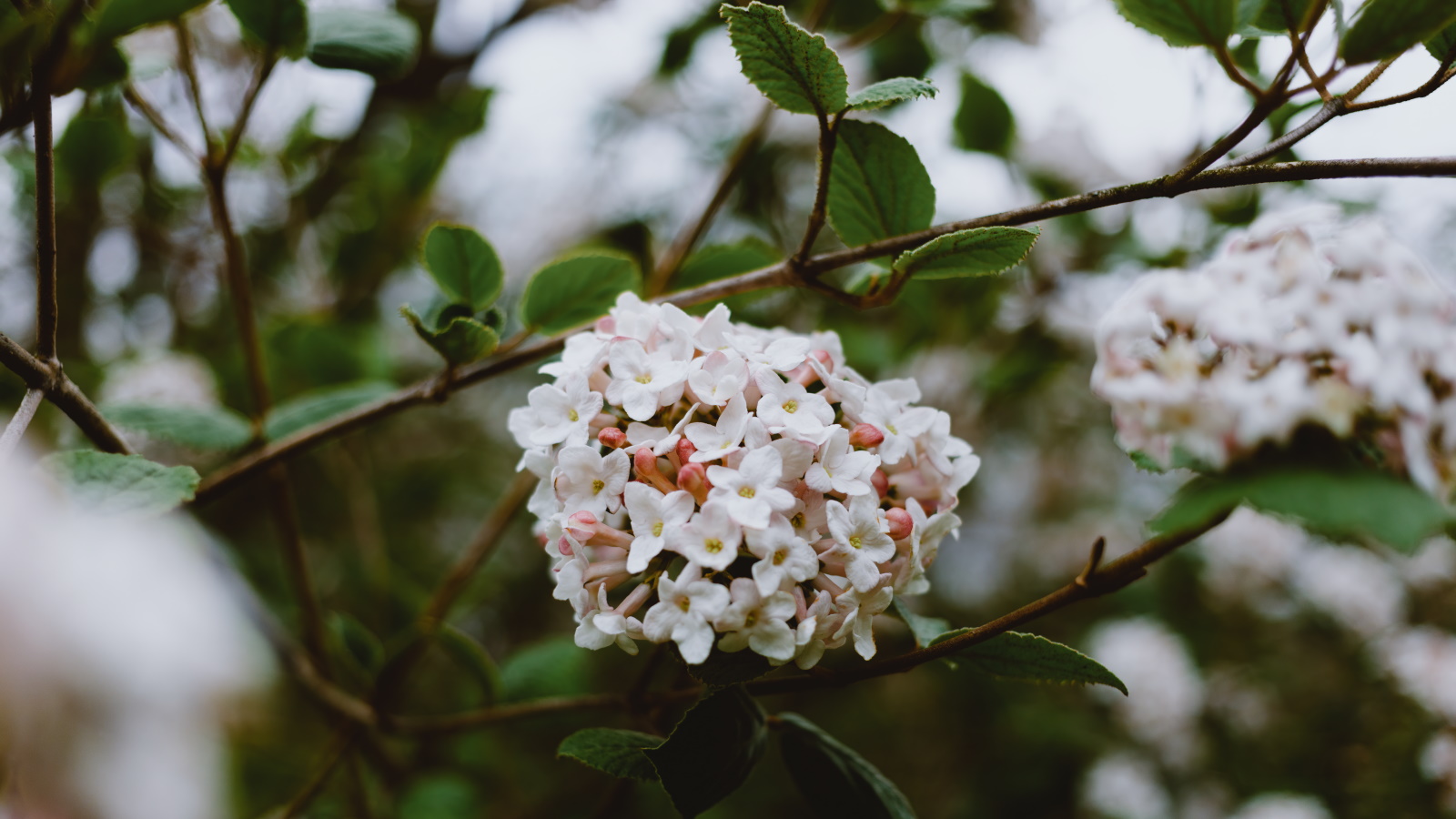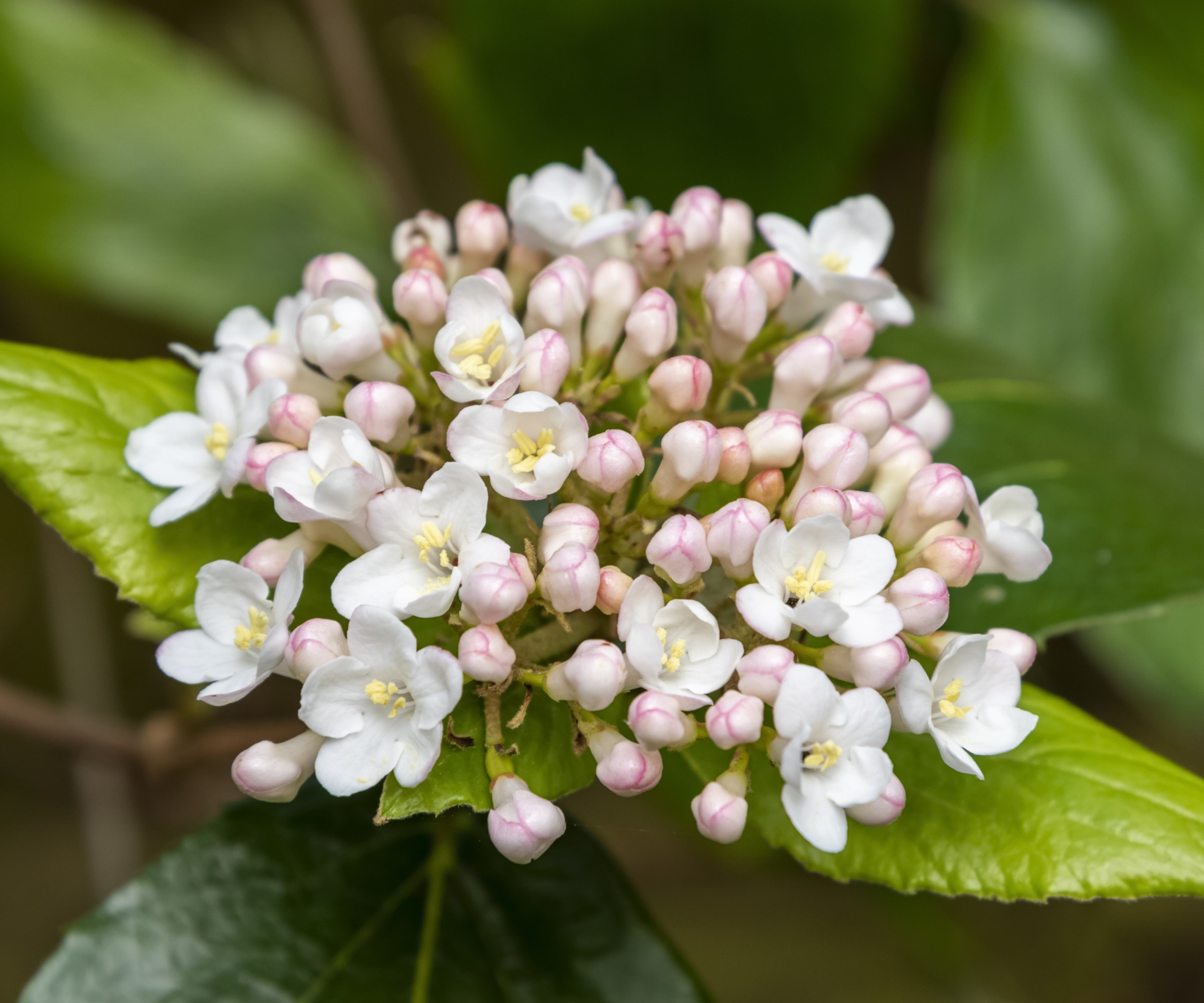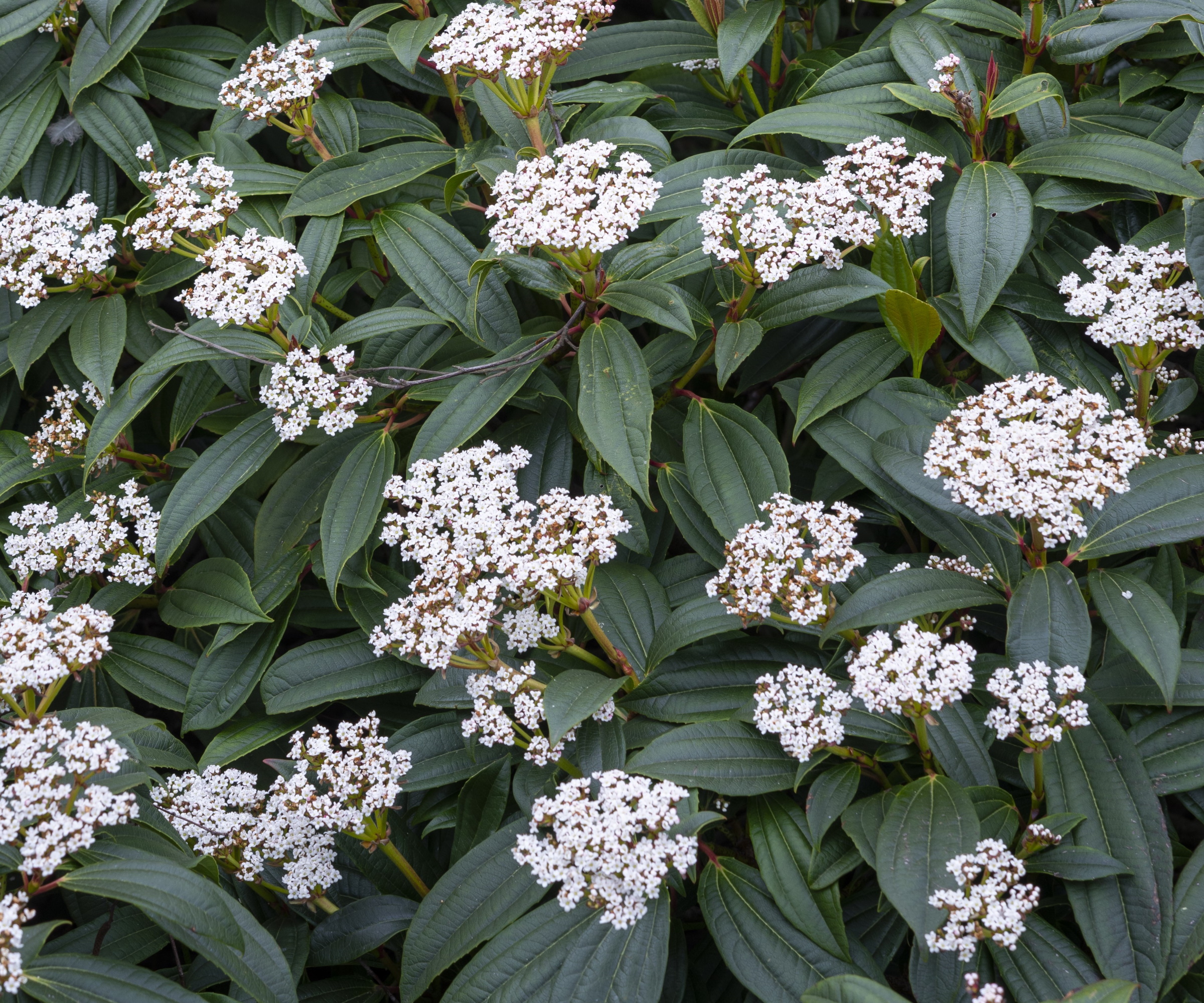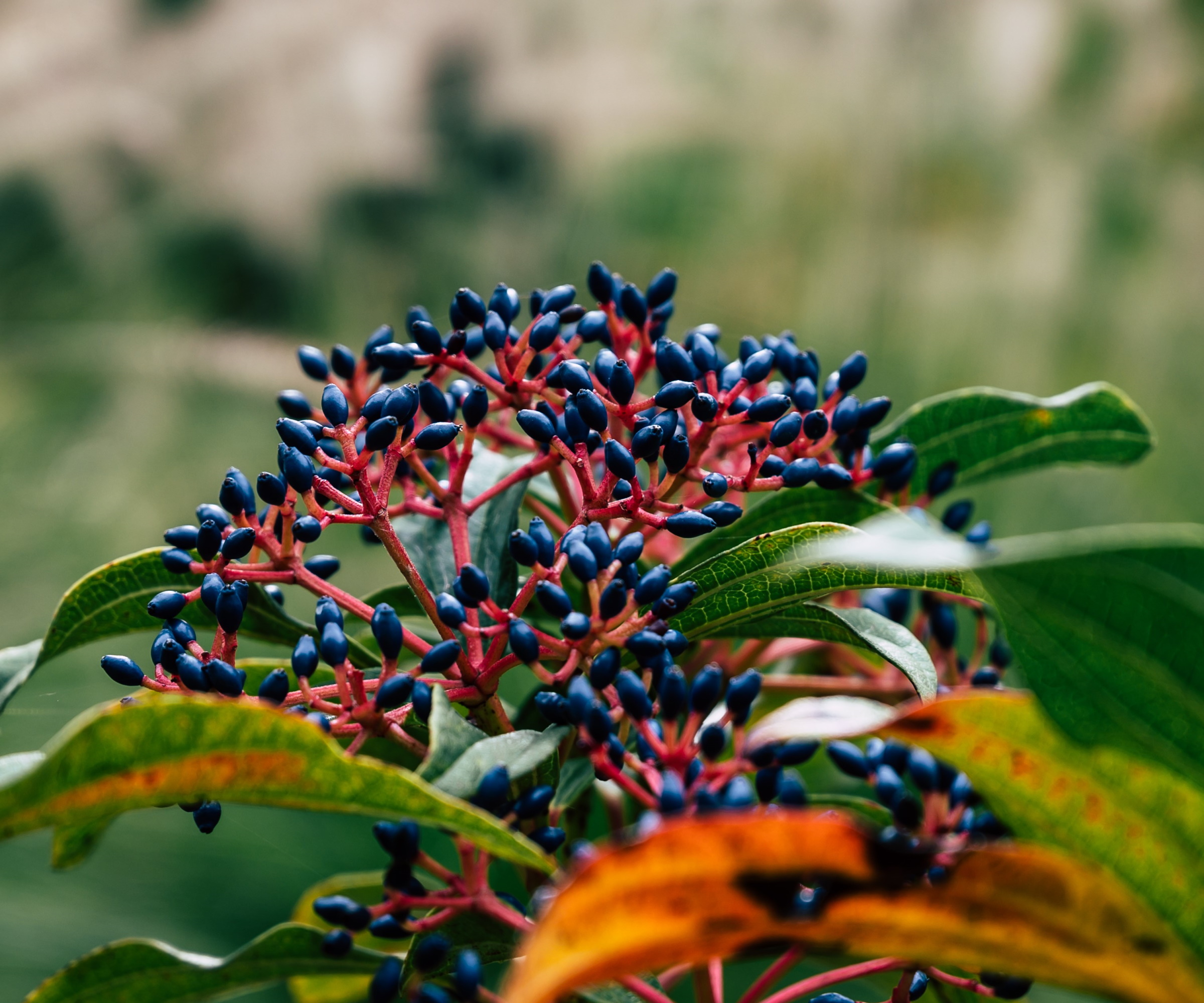
As a low-maintenance and fast-growing shrub, it is no wonder that the viburnum genus has remained a popular planting option with gardeners. This diverse plant group has a range of evergreen and deciduous varieties, all with attractive foliage and flowers, with many also producing colorful winter berries.
Flowers can range from shades of white to pink, whilst berries can be anything from different hues of red to dark blue or black. As we seek to maximize our yards and get the most out of every season, growing a viburnum seems a sensible option that can provide year-round interest.
These ornamental features of viburnum species have made them prized choices for designers, with many considering them one of the best landscaping shrubs, impactful for their vibrant blooms, berries, and foliage.
Viburnums are generally hardy and adaptable shrubs that are known for their versatility, with many varieties able to thrive in different zones and withstand a range of conditions. There is something to suit every taste and most locations, whether you have a sunny spot next to your front door or a part-shaded corner in your backyard, there will be a viburnum variety to suit you.
Read our top tips on how to care for viburnum to ensure that your shrub succeeds and adds impact to your outdoor space.

How to grow viburnum
Whilst most viburnums are hardy and resilient, it is important to follow some basic principles when planting and maintaining. Read our top tips on how to care for viburnum to ensure that your shrub succeeds.
Considerations when growing viburnum

The viburnum genus has a global distribution, and can be found in North America, Europe, Asia, and Africa. Needless to say, this wide range of different species and varieties will all have different growing preferences. 'With such a diverse range of viburnum varieties available, it's important to choose the one that suits your specific growing conditions and preferences,' says Alex Kantor, gardening expert and owner at Perfect Plants.
When considering if you can grow viburnum in your garden, note that most varieties will grow in US hardiness zones 2 – 8 but it is always worth reading the plant label to make sure the variety is suitable for you. 'Viburnum varieties offer a wide range of choices for gardeners, each with its own unique characteristics,' Alex continues.
The spring flowering Viburnum carlesii, for example, will thrive in zones 4 – 8, but will not enjoy the cooler conditions of zones 2 and 3. In addition, the popular Viburnum tinus will do well growing in the warmer zones 8, 9 and 10. A useful and popular option to consider that is readily available to purchase, such as this Viburnum Tinus 'Compactum' or commonly known as the Spring Flowering Viburnum from My Perfect Plants.
Finally, it is important to find the right place in your backyard for your viburnum. Many gardening experts consider viburnum to be an easy option, and whilst this is true, it is important to remember that they need space to grow. 'Certain varieties can grow quickly, reaching their mature height and spreading within a few years, like the sweet viburnum,' Alex says. Always select a location where you can get the most out of your plant, and you are not regularly cutting it down.
Shop viburnum plants
Sweet viburnum, or Viburnum Odoratissimum, is an easy-to-grow shrub offering dark green accents and beautiful fall colors with minimum maintenance.
The Spring Bouquet Viburnum, Viburnum Tinus 'Compactum', is a beautiful semi-evergreen shrub with delicately fragrant pinkish-white blossoms and dark green leaves.
Autumn Jazz Arrowwood Viburnum, or Viburnum dentatum 'Ralph Senior', is a deciduous shrub with creamy-white flowers blooming from late May to mid-June.
Top Tips For Planting And Maintaining Viburnum

- Soil: The best time to plant viburnums 'is in the spring or fall when the soil is workable,' Alex recommends. They 'prefer moist, but well-drained soil.' You can add some form of soil improvement or drainage material at the base before planting, and yearly mulching will help improve the quality of your soil.
- Light: For the best results, follow specific preferences of your viburnum variety, but generally they will do well in a location 'ranging from full sun to partial shade,' Alex says. Whilst many consider viburnum an option for a shady backyard, this is not the case, growing better in lighter positions.
- Watering: 'Regular watering is important, especially during dry periods, to ensure healthy growth,' Alex says. 'Be sure not to overwater your plant. Viburnums do not do well with soggy or consistently wet soil.' Once established, many varieties will survive dry periods just fine, with little attention.
- Fertilizing: Most viburnums do not need fertilizer once established. However, during the first year, you can apply a general feed to encourage healthy growth of foliage, flowers and root system.
- Pruning: Whilst most viburnums are easy to grow, 'most will require some maintenance, involving some pruning to remove dead or diseased branches,' Alex says. Knowing when to prune viburnums is important, but this is usually after flowering has finished. At this time, you can shape your shrub, and remove damaged and diseased wood.
FAQs
When is the best time to prune my viburnum?
Knowing the right time to prune viburnum is important, as doing so at the wrong time can damage the plant and result in fewer flowers and stunted growth. Usually, the best time to prune is after flowering during the spring months. Any branches that are weak or damaged can be removed, and you can maintain the desired shape.
With such a diverse range of viburnum varieties available, it's important to choose the one that suits your specific growing conditions and preferences. Consider using viburnum shrubs as a hedge, or perhaps even as privacy screens. Whilst useful, the flowers and scent make them an excellent choice for adding beauty and fragrance to your backyard.







